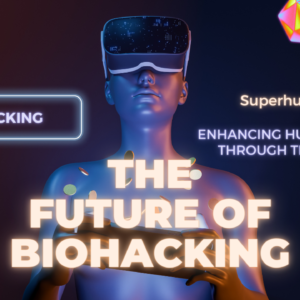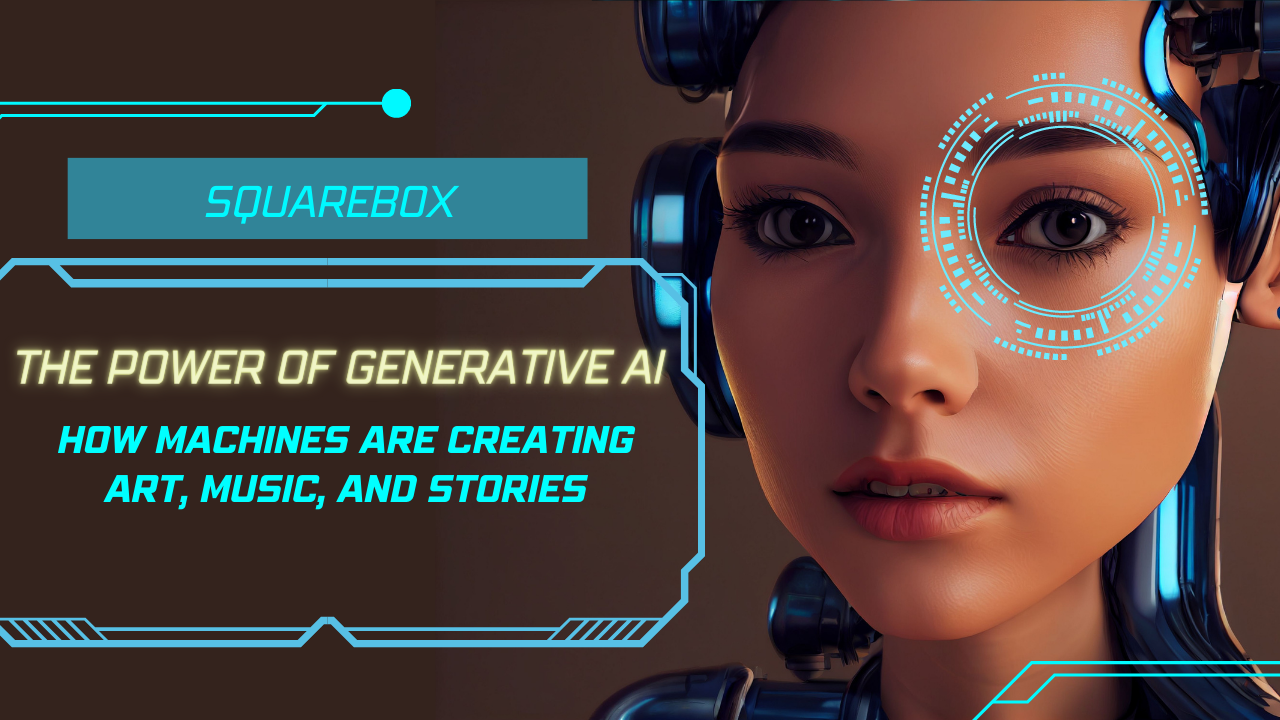Table of Contents
- Definition of Generative AI
- Brief Overview of Generative AI’s Impact on the Arts
- Generative Art
- Generative Music
- Generative Stories
- Benefits of Generative AI in Arts and Creativity
- Potential Concerns of Generative AI in Arts and Creativity
- Conclusion
- FAQs
Artificial intelligence (AI) has become an integral part of various industries, including the arts. Generative AI, in particular, has been used to create art, music, and stories with astounding results. In this article, we will explore the definition of generative AI, its impact on the arts, and different types of generative art, music, and stories.
Definition of Generative AI
Generative AI refers to a machine learning system that creates original content by analyzing existing datasets. It is a process that involves using algorithms and neural networks to generate new output that is similar to the input data. In the case of the arts, generative AI systems analyze previous works in the medium (music, literature, art), extract patterns, and use them to create new and unique pieces.

Brief Overview of Generative AI’s Impact on the Arts
Generative AI systems have revolutionized the way the arts are created. Their ability to analyze vast databases of existing works and generate new content has opened up endless possibilities for artists and creators. It has also given audiences a fresh perspective on the creative process and the role that technology can play in the production of art.
Generative Art
Generative art is a form of art that involves the use of generative AI systems to create artworks. It involves the use of algorithms, rules, and procedures to generate images, sculptures, and interactive installations. The resulting artworks are unique and can be adjusted with algorithms, such that the output is never the same.
Conceptualizing Generative Art
Generative art uses algorithms to generate images that are not preconceived but created on their own. The algorithms are rules that vary the outcome and distribute the result in an unpredictable way. Generative art is not just a single image; the result can generate hundreds of images, making each artwork unique and unpredictable.
Understanding the Role of AI in Creative Processes
One of the key roles of AI in generative art is to assist artists in creating unique, non-repetitive pieces. Rather than relying on chance, generative art allows artists to control the parameters of their work, making the process more efficient and allowing for greater creativity in the output.
The Creativity Debate: Can AI Create Meaningful Art?
Some argue that AI can only create works that are without meaning and a soul because it uses a repetitive algorithm. However, with generative art, the results are always unique and often unpredictable, making the process more engaging for both the artist and the audience.
Types of Generative Art
There are several types of generative art, including:
Fractal Art
Fractal art involves using mathematical equations to create complex and intricate visuals. The result is often beautiful and mesmerizing, featuring patterns that are repeated at different scales, creating intricate designs in perfect harmony.
Algorithmic Art
Algorithmic art involves using computational algorithms to generate artwork. This type of generative art revolves around the creation of complex equations and coding language to create visual masterpieces.
Data-Mosaic Art
Data-Mosaic art involves the use of a data matrix to create abstract images. The data matrix is used to create an image and then randomized with different algorithms to create a unique work.
Examples of Generative Art
Examples of generative art include:
AIVA: The Music Composer AI
AIVA is a musical composer that generates original pieces using deep learning and a robust algorithm. It has generated songs for global icons such as Porsche, Samsung, and Huawei while also producing classical music albums that have received critical acclaim.
DeepDream: The Dreaming AI
DeepDream is a generative art software system developed by Google. It analyzes images and then generates dream-like visuals that look like they were drawn by an artist. The output features qualities like texture, symmetry, and other subtle aesthetic choices.
Generative Music
Generative music is a type of music that utilizes AI systems to create original music. These systems analyze vast databases of existing music and use the patterns extracted from the database to create unique and novel pieces.
Conceptualizing Generative Music
Generative music uses AI to create original music by analyzing previous works. The resulting pieces are then generated using pre-determined rules that help define the pattern and sound of the music.
Understanding the Role of AI in Music Composition
AI plays a key role in music composition by assisting music creators in producing new and original pieces. The AI systems generate music taking into consideration several parameters, including instruments, beat, melody, tonality, and general aesthetic choices.
Appreciating the Aesthetic Appeal of Generative Music
Generative music is appreciated by audiences who seek new and unique experiences. The AI-generated sound provides a futuristic twist to the music and often challenges traditional thinking patterns.
Types of Generative Music
There are different types of generative music, including:
Randomness-Based Music
Randomness-based music is created when the algorithm generates C sound based on a predetermined level of randomness.
Rule-Based Music
Rule-based music involves the use of a specific set of rules to generate music. These rules are generally associated with melody, time signature, instrumentation, and other factors.
Emergent Music
Emergent music is created when the AI system is able to generate new and non-repetitive music with ease, making each piece unique and original.
Examples of Generative Music
Examples of generative music include:
Endel: AI-Generated Music Sleep Assistant
Endel is a sleep assistance app that uses generative music to help users sleep faster and better. It analyzes the user’s biometric data and generates unique and personalized sounds that aid relaxation and induce sleep.
Amper: The AI Music Composer
Amper is an AI-powered music composer that generates music based on the user’s preferences. Users can adjust parameters, such as melody, tempo, and rhythm, to create personalized and unique music.
Generative Stories
Generative stories refer to using AI systems to create original stories. These systems analyze previous literary works and generate new narratives in different genres, such as science fiction, romance, horror, and fantasy.
Conceptualizing Generative Stories
Generative stories are created when an AI system generates new narratives based on pre-assigned parameters and rules. It leverages the different structural elements of storytelling, such as character, plot, setting, and tone, to come up with new and original narratives.
Understanding the Role of AI in Storytelling
AI plays a crucial role in storytelling by assisting authors in creating original and unique stories. The AI system analyzes a massive dataset of literary works and extracts rules and patterns, which are then used to generate unique stories with different tones, styles, and genres.
The Art of Storytelling: The Intersection of AI, Narrative, and Creativity
The art of storytelling is a critical tenet of generative stories. The process of creating new stories involves a balance between AI-generated output and the creativity of human authors. Together, these elements can produce unique and compelling stories that push the limits of traditional storytelling.
Types of Generative Stories
There are different types of generative stories, including:
Plot-Based Stories
Plot-based stories involve an AI system that generates stories based on a plot structure. With this type of generative story, the plot is pre-determined, and the AI system fills in the details with each new output.
Character-Based Stories
Character-based stories involve an AI system that generates stories based on a character. This type of generative story starts with a character and allows the AI system to create new and unique narratives based on the character’s motivations and faults.
Setting-Based Stories
Setting-based stories involve an AI system that generates stories based on a specific setting. This type of generative story allows readers to explore new worlds and concepts.
Examples of Generative Stories
Examples of generative stories include:
Botnik Studios: The Machine-Assisted Screenwriter
Botnik Studios uses a generative AI system to create screenplays and other forms of content. The system analyzes previous works and then uses the patterns to generate unique and cleverly written scripts.
Heliograf: The AI-Powered News Writer
Heliograf is a news-writing system that uses generative AI to produce news articles. The AI system analyzes data and generates news articles on a particular topic within minutes.
Benefits of Generative AI in Arts and Creativity
Generative AI has several benefits in arts and creativity, including:
Efficiency and Productivity Enhancement
Generative AI systems save time by creating original content quickly and efficiently. This allows creators to focus on more significant tasks, such as bringing human creativity to the art, music, and stories.
Multi-dimensional Creativity Exploration
Generative AI allows creators to explore creativity in new and exciting ways, pushing the boundaries of traditional art, music, and storytelling.
Audience Engagement Amplification
Generative AI-generated art, music, and stories capture the audience’s imagination, providing a unique and otherworldly experience that transcends traditional creative methods.
Potential Concerns of Generative AI in Arts and Creativity
While generative AI has several benefits, there are also potential concerns to consider, including:
Quality Control Issues
Generative AI systems can generate low-quality or irrelevant content that can negatively impact the overall quality of art, music, and stories.
Ethical Considerations
There are ethical considerations surrounding the use of generative AI in art, music, and storytelling. For example, some may argue that the use of AI systems challenges human creativity or risks creating a society without human art, music, or storytelling.
Redefining the Role of Human Creativity
Generative AI has the potential to redefine the role of human creativity by creating a co-worker model where AI and humans work together to create the best possible result. This model, if executed correctly, would be a win-win situation for both the AI and the human creators.
Conclusion
Generative AI has become an important part of the arts, providing creators with unique and exciting new possibilities that were once impossible. Through generative art, music, and stories, AI has shown that it has immense potential not just for the arts but also for society as a whole. While there are potential concerns to consider, it is ultimately up to humans to leverage this technology in the most responsible, creative, and ethical way possible.
FAQs
How does Generative AI work?
Generative AI works by analyzing vast datasets of existing works and extracting patterns that are used to create new and unique pieces of art, music, and storytelling.
Can AI replace human creativity?
AI cannot replace human creativity, but it can assist and enhance creativity by providing creators with new and exciting tools and possibilities.
What industries are most primed for AI integration?
Several industries, including healthcare, finance, and education, are currently primed for AI integration. However, AI’s impact on art, music, and storytelling is rapidly growing, showing that it can be integrated into any industry.
How is the AI impact different from human art?
AI-generated art, music, or storytelling is different from human art in that it is based on analyzing existing patterns. However, the final products can be engaging, unexpected, novel, and even mesmerizing.




